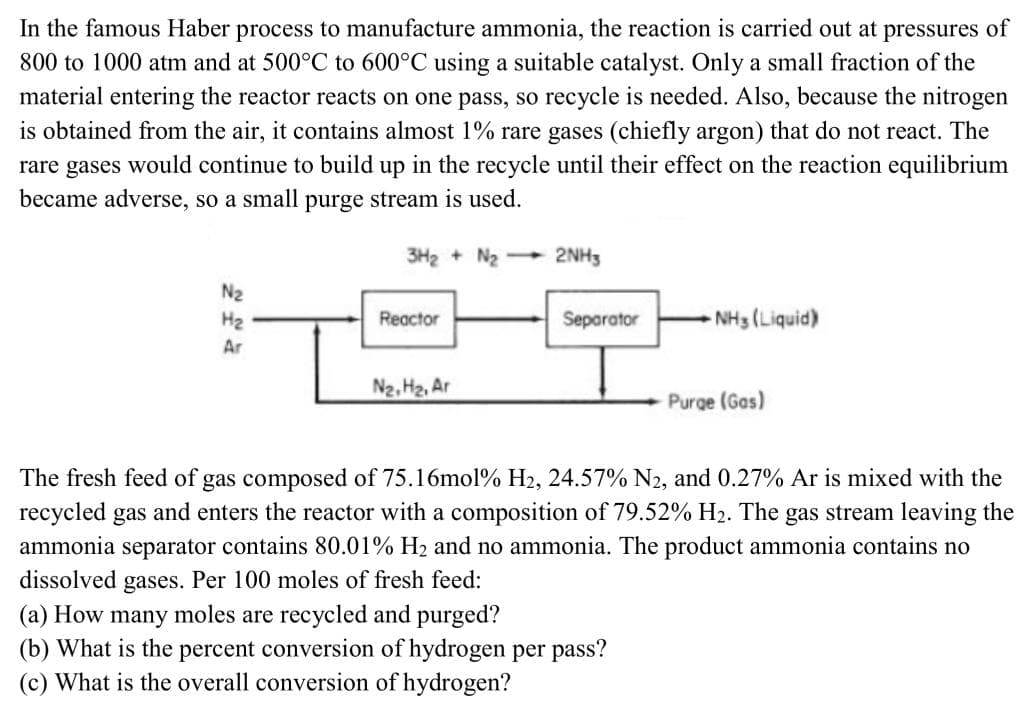In the famous Haber process to manufacture ammonia, the reaction is carried out at pressures of 800 to 1000 atm and at 500°C to 600°C using a suitable catalyst. Only a small fraction of the material entering the reactor reacts on one pass, so recycle is needed. Also, because the nitrogen is obtained from the air, it contains almost 1% rare gases (chiefly argon) that do not react. The rare gases would continue to build up in the recycle until their effect on the reaction equilibrium became adverse, so a small purge stream is used. 3H₂ + N₂- 2NH3 N₂ H₂ Ar Reactor N₂, H₂, Ar Separator NH3 (Liquid) (a) How many moles are recycled and purged? (b) What is the percent conversion of hydrogen per pass? (c) What is the overall conversion of hydrogen? Purge (Gas) The fresh feed of gas composed of 75.16mol % H2, 24.57% N2, and 0.27% Ar is mixed with the recycled gas and enters the reactor with a composition of 79.52% H₂. The gas stream leaving the ammonia separator contains 80.01% H₂ and no ammonia. The product ammonia contains no dissolved gases. Per 100 moles of fresh feed:
Note: NO SOLVING. READ INSTRUCTIONS PROPERLY.
Instructions: For the problem attached, please establish the process' history, description, advantages and disadvantages. Such, please elaborate on the existing process conditions (i.e. conversion, extent of reaction, and others) and state all valid assumptions in reference to published materials.
In line with this, please attach the link of the scientific journals you referred to here or your resources. as I will do more research about it. Thus, no need for several paragraphs. Bullet points with two-three sentences paragraph will be okay too. Please help me by suggesting ideas.
I will give absolute thumbs up/good rate afterwards.

Trending now
This is a popular solution!
Step by step
Solved in 9 steps with 7 images









